Clear-Cutting Pros and Cons: What You Need to Know
- August 16, 2024
- 0 comment
Clear-cutting is a widely used forestry technique involving the removal of most or all trees in a designated area. This method is highly efficient for timber production but also controversial due to its significant environmental impacts.
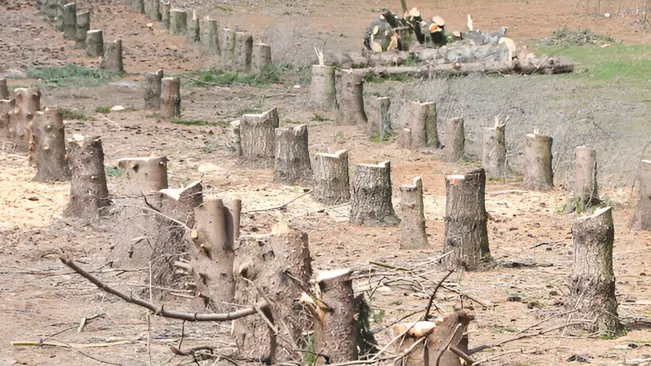
Understanding the clear-cutting pros and cons is important for making informed decisions about forest management. This discussion aims to provide a balanced view of clear-cutting, highlighting its benefits and drawbacks.
What is Clear-Cutting?
Clear-cutting is a forestry technique where all or most of the trees in a designated area are uniformly removed. This method is widely used to harvest timber rapidly and efficiently, meeting high market demands for wood products.
Historically, clear-cutting has become a standard practice in regions with significant timber industries due to its economic benefits. However, despite its efficiency and ability to provide quick economic returns, clear-cutting also raises substantial environmental concerns.
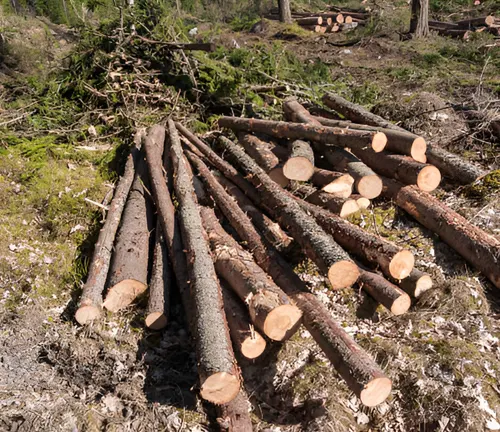
The practice can lead to soil erosion, loss of biodiversity, and long-term ecological degradation, prompting debates over its sustainability and impact on forest ecosystems
Types of Clear-Cutting Practices
1. Uniform Clear-Cutting
This involves removing all trees in a specific area, leaving a uniform, clear landscape. This method is straightforward and maximizes timber yield.

2. Patch Clear-Cutting
Involves cutting trees in smaller, specific patches within a forest. This technique aims to reduce environmental impact by leaving surrounding areas intact, allowing for easier regeneration.
3. Strip Clear-Cutting
Trees are cut in long, narrow strips, leaving adjacent areas untouched. This method helps reduce soil erosion and facilitates natural regeneration from surrounding tree stands.
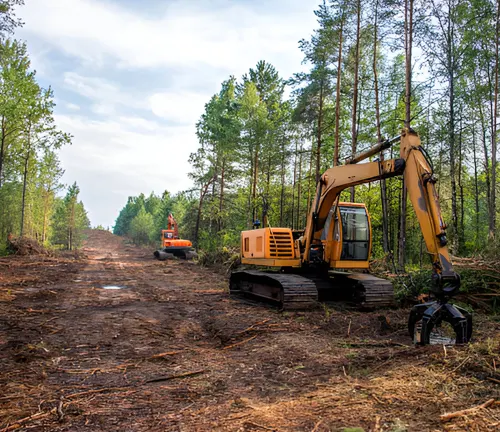
4. Selective Clear-Cutting
Only certain trees are removed, typically the mature or diseased ones, while others are left standing. This method minimizes ecological disruption and supports continuous forest cover.
Clear-Cutting Pros and Cons
Advantages of Clear-Cutting
1. Economic Benefits
Clear-cutting is one of the most cost-efficient methods for harvesting timber. It allows loggers to quickly clear large areas, significantly reducing labor and operational costs. The high volume of timber produced from clear-cutting meets market demands and supports the logging industry by stabilizing timber prices and ensuring a steady supply
2. Forest Regeneration
Clear-cutting can promote the growth of tree species that require full sunlight. Species like pines and aspens thrive in clear-cut areas because the open space allows for maximum sunlight penetration.

Additionally, clear-cutting can help control pests and diseases by removing infected trees, providing a fresh start for forest regeneration.
3. Land Management
Clear-cutting facilitates land conversion for agriculture or urban development. By removing all trees, the land becomes ready for new uses without the need for additional clearing. It also simplifies infrastructure development, such as road construction, by providing easy access to previously forested areas.
Disadvantages of Clear-Cutting
1. Environmental Consequences
Clear-cutting leads to significant soil erosion because the roots that stabilize the soil are removed along with the trees. This can result in increased sediment in waterways, affecting water quality and aquatic habitats. The disruption of water cycles due to the removal of trees also increases runoff and reduces water infiltration, which can lead to flooding and changes in local hydrology.
2. Impact on Climate
Clear-cutting reduces the number of trees available to sequester carbon dioxide, contributing to higher greenhouse gas levels in the atmosphere. Trees play a crucial role in carbon sequestration, and their removal exacerbates climate change.
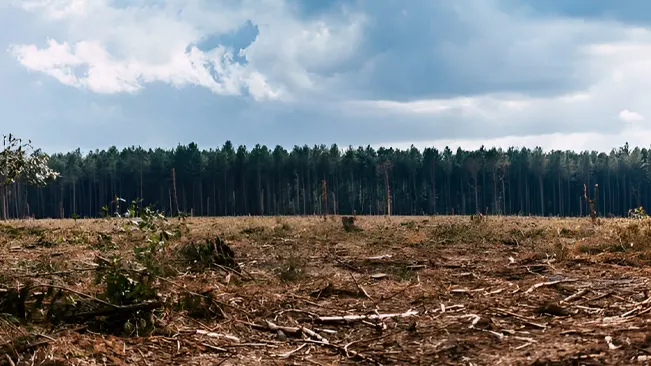
Additionally, the loss of forest cover disrupts local temperature regulation, potentially leading to microclimate changes that affect both the local environment and broader climatic patterns.
3. Biodiversity Loss
The destruction of habitats is one of the most severe consequences of clear-cutting. Many plant and animal species depend on forest environments for survival, and clear-cutting eliminates these habitats, leading to a decline in biodiversity. Species displacement is another issue, as animals and plants are forced to relocate, sometimes unable to find suitable new habitats, which can lead to their extinction.
Clear-cutting vs. Deforestation: What’s the difference?
Clear-cutting is often confused with deforestation, but there are key differences. Clear-cutting involves the removal of trees with the intention of regenerating the forest or repurposing the land temporarily.
In contrast, deforestation refers to the permanent removal of forests for alternative land uses, such as agriculture or urban development, with no plans for reforestation. Understanding these differences is crucial for developing appropriate forest management strategies.
Forest Recovery Time from Clear-Cutting
The recovery time for a forest after clear-cutting can vary widely. Factors such as region, tree species, and environmental conditions play significant roles in determining recovery duration.
Initial regrowth may occur within 5-10 years, but full ecological recovery, including soil stabilization and biodiversity restoration, can take several decades to over a century. Effective management and reforestation efforts are essential to facilitate quicker and more sustainable recovery.
Balancing the Pros and Cons
Achieving a balance between the benefits and drawbacks of clear-cutting is crucial for sustainable forest management. By incorporating selective clear-cutting, reforestation, and other sustainable practices, we can mitigate negative environmental impacts while still reaping the economic benefits of this forestry technique.
Selective Clear-Cutting
This approach can reduce the environmental impact by retaining some trees to maintain biodiversity and soil stability. It allows for a more gradual transition and can help sustain wildlife habitats while still providing timber resources
Reforestation Techniques
Post-clear-cutting, reforestation efforts are crucial. This includes planting native tree species that are well-suited to the local environment, ensuring faster recovery and higher survival rates. Using a mix of species can also enhance biodiversity and ecosystem resilience
Soil and Water Conservation Measures
Implementing measures to prevent soil erosion and maintain water quality is vital. This involves using erosion control techniques such as planting ground cover, building terraces, and protecting riparian zones to prevent sediment runoff and protect aquatic habitats
Controlled Burns
In some ecosystems, controlled burns can be used to reduce competition from invasive species and promote the growth of native vegetation. This technique mimics natural fire cycles, which are essential for the health and regeneration of certain types of forests
Conclusion
Clear-cutting is a complex forestry practice with significant benefits and drawbacks. While it provides economic efficiency and promotes the regeneration of certain tree species, it also poses environmental risks like soil erosion, loss of biodiversity, and climate change impacts.
A balanced approach that incorporates sustainable practices and active restoration techniques is essential to mitigate these negative effects. By understanding and addressing the pros and cons of clear-cutting, forest managers can make informed decisions that ensure the long-term health and resilience of forest ecosystems.
Frequently Asked Questions (FAQ’s)
- What is clear-cutting?
Clear-cutting is a logging practice where most or all trees in a designated area are uniformly cut down. This method is often used to quickly harvest timber and clear land for other uses. It is a common practice in forestry but comes with both economic and environmental implications. - What are the economic benefits of clear-cutting?
Clear-cutting is highly cost-effective, allowing loggers to harvest large volumes of timber quickly and efficiently. It reduces labor and operational costs, providing a significant supply of timber that supports market demand and stabilizes prices. - How does clear-cutting impact forest regeneration?
Clear-cutting can promote the growth of tree species that require full sunlight, such as pines and aspens. This method can also help control pests and diseases by removing infected trees and providing a fresh start for forest regeneration. - What are the environmental consequences of clear-cutting?
Clear-cutting can lead to significant soil erosion, water cycle disruption, and loss of biodiversity. The removal of trees destabilizes the soil, increases runoff, and reduces water infiltration. It also destroys habitats, leading to a decline in plant and animal species. - How does clear-cutting affect climate change?
Clear-cutting reduces the number of trees that sequester carbon dioxide, contributing to higher levels of greenhouse gases in the atmosphere. It disrupts local temperature regulation and can lead to microclimate changes, exacerbating climate change impacts. - What is the difference between clear-cutting and deforestation?
Clear-cutting involves the removal of trees with the intention of regenerating the forest or repurposing the land temporarily. In contrast, deforestation refers to the permanent removal of forests for alternative land uses, such as agriculture or urban development, with no plans for reforestation. - How long does it take for a forest to recover from clear-cutting?
The recovery time for a forest after clear-cutting can vary widely, from a few decades to over a century, depending on the region, tree species, and environmental conditions. Initial regrowth may occur within 5-10 years, but full ecological recovery can take much longer. - What are some sustainable practices to mitigate the effects of clear-cutting?
Sustainable practices include selective clear-cutting, reforestation with native species, soil and water conservation measures, and controlled burns. These methods help minimize environmental impact and promote ecosystem recovery. - Can clear-cutting be beneficial for wildlife?
In some cases, clear-cutting can create habitats for certain wildlife species that thrive in open, sunlit areas. However, it often disrupts existing habitats and displaces species that rely on forest cover, leading to a net loss in biodiversity. - What role does monitoring play in the management of clear-cut areas?
Continuous monitoring of clear-cut areas is essential to assess the effectiveness of reforestation and restoration efforts. Adaptive management practices, which involve adjusting strategies based on observed outcomes, help improve forest recovery and ensure sustainable management.

Jordan Blake
Forestry AuthorJordan Blake is a forestry expert with over 15 years of experience in arboriculture and community education. Passionate about sustainable forest management, Jordan regularly writes for Forestry.com and Tree Care Magazine. Holding certifications in tree health assessments and urban forestry management, Jordan conducts workshops to educate the public on sustainable practices. Jordan has a degree in Environmental Science and enjoys hiking and photography in their free time.





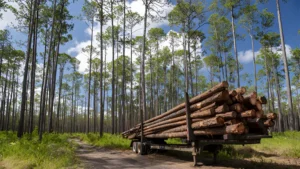

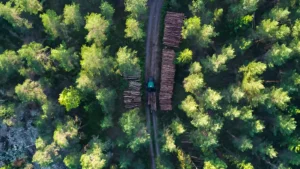

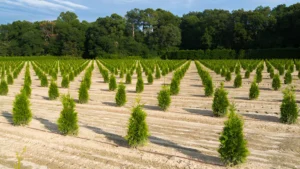



Leave your comment